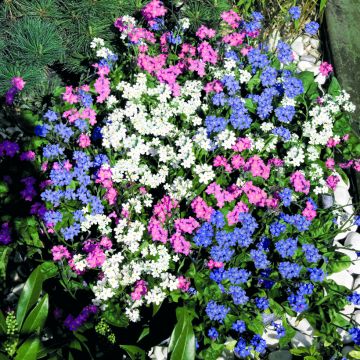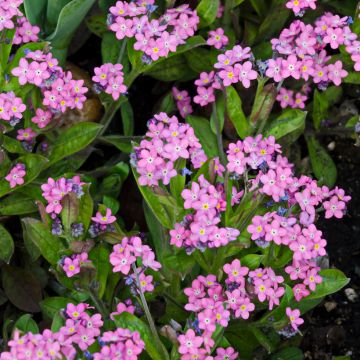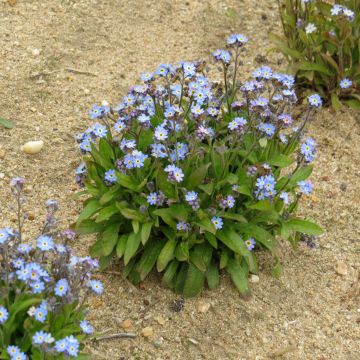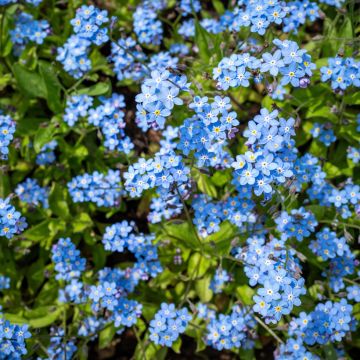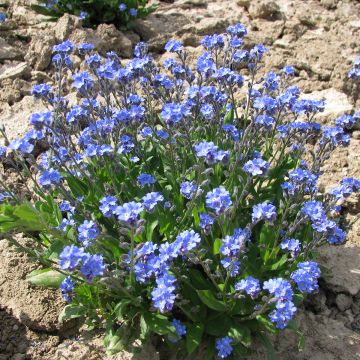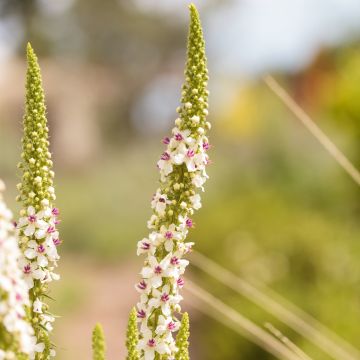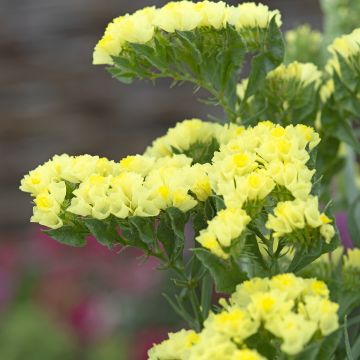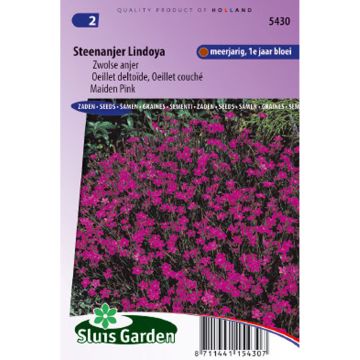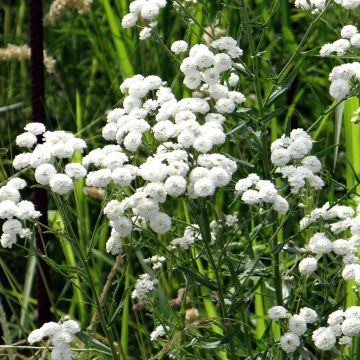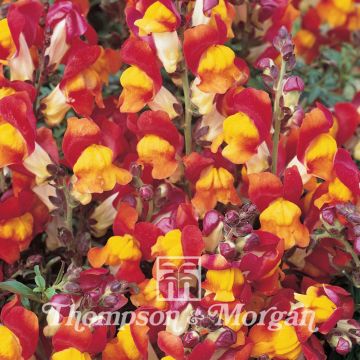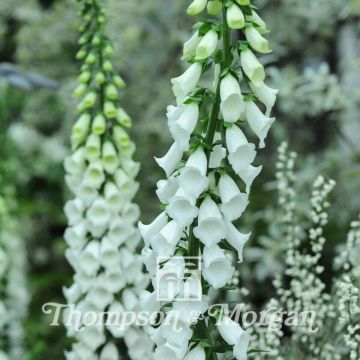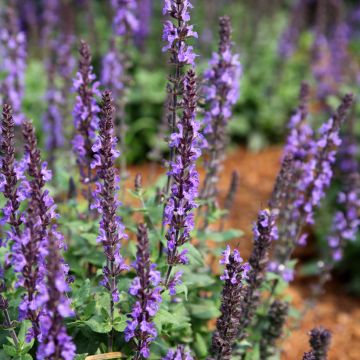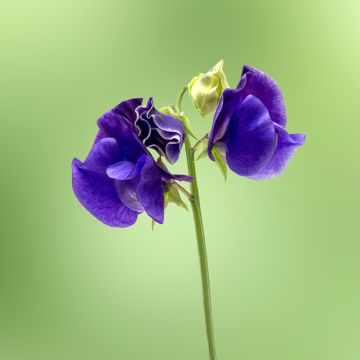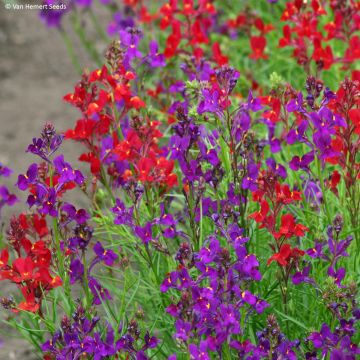Shipping country and language
Your country of residence may be:
Your country of residence is:
For a better user experience on our website, you can select:
Your shipping country:
-
Andorra
-
Austria
-
Belgium
-
Bulgaria
-
Canada
-
Chile
-
Croatia
-
Cyprus
-
Czechia
-
Denmark
-
Estonia
-
Finland
-
France
-
Germany
-
Greece
-
Hungary
-
Iceland
-
Ireland
-
Italy
-
Latvia
-
Lithuania
-
Luxembourg
-
Malta
-
Monaco
-
Netherlands
-
Poland
-
Portugal
-
Romania
-
Slovakia
-
Slovenia
-
Spain
-
Sweden
-
Switzerland
-
United Kingdom
We only deliver seed and bulb products to your country. If you add other products to your basket, they cannot be shipped.
Language:
-
French
-
German
-
Spanish
-
English
-
Italian
My Account
Hello
My wish lists
Log in / Register
Existing customer?
New customer?
Create an account to track your orders, access our customer service and, if you wish, make the most of our upcoming offers.
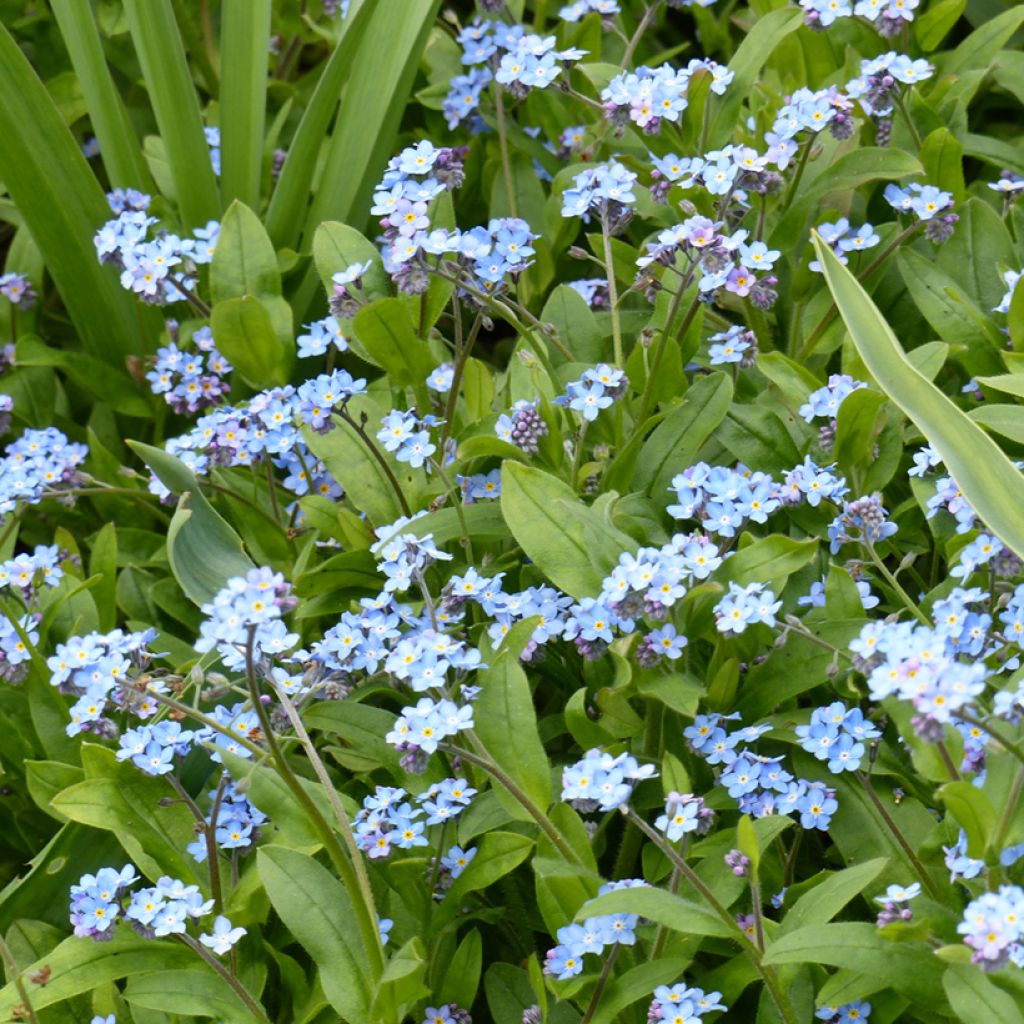

Blue Forget-Me-Not Seeds - Myosotis sylvatica
Blue Forget-Me-Not Seeds - Myosotis sylvatica
Myosotis sylvatica Bleu
Wood Forget-Me-Not, Woodland Forget-Me-Not
The seeds have not germinated.
Sophie , 29/09/2023
Order in the next for dispatch today!
Dispatch by letter from €3.90.
Delivery charge from €5.90 Oversize package delivery charge from €6.90.
More information
This item is not available in your country.
Schedule delivery date,
and select date in basket
This plant carries a 6 months recovery warranty
More information
We guarantee the quality of our plants for a full growing cycle, and will replace at our expense any plant that fails to recover under normal climatic and planting conditions.
Seed-only orders are dispatched by sealed envelope. The delivery charge for seed-only orders is €3.90.

Does this plant fit my garden?
Set up your Plantfit profile →
Description
The Myosotis sylvatica, also given the poetic nickname of Wood Forget-Me-Not or Woodland Forget-Me-Not, offers the simplest and the most deliciously romantic of all blue flowers. This annual or short-lived perennial whose much appreciated blue lavender flowers appear in the springtime, wanders around the garden, unexpectedly cropping up as a bright carpet at the foot of bulbs, shrubs and perennials. This plant is so happy in our climates that it self-seeds durably over the years, becoming a timeless, almost eternal companion in our gardens. It has a distinct preference for rather moist, rich and free-draining soil, in the half shade of undergrowth or in sunny flowerbeds and rockeries.
Wood Forget-Me-Not is a plant from the Boraginaceae family, native to prairies, open undergrowth and the forest edges of almost all of Europe, except for the most northern and south-western reaches. This short-lived perennial is generally grown as an annual and forms small rosettes of pubescent, pale green foliage from which hairy stems that are well-branched in their upper parts, emerge from April to June, bearing 30 cm high curved inflorescences that lengthen as the flowers open. They are composed of fragrant, lavender blue flowers with yellow centres that are 5 mm in diameter. Once well established, the Wood Forget-Me-Not self-seeds freely in the garden.
The Woodland Forget-Me-Not is traditionally used as a filler whose airy blooms set off bulbous plants in the springtime (daffodils, Narcissus, common cowslip), dwarf irises or tulips. You can also plant it in large groups in perennial beds, borders and window boxes. In the warmest regions, it will enjoy growing in the undergrowth in the company of bleeding hearts. The light blooms of the wood forget-me-not are very decorative in spring bouquets especially when combined with bigger flowers (such as peonies and roses). Its motto could be : ‘Sow it once, you will have it forever.’
Report an error about the product description
Flowering
Foliage
Plant habit
Botanical data
Myosotis
sylvatica
Bleu
Boraginaceae
Wood Forget-Me-Not, Woodland Forget-Me-Not
Northern Europe
Other Forget-me-Not seeds
Planting and care
Sow from May to June. Place the seeds on the surface of a moist, light and well-drained soil. Do not cover the seeds. Enclose in a polyethylene bag kept at a temperature between 15 and 20ºC. Germination usually takes 14 to 30 days. Do not exclude light as this facilitates germination. The seeds can also be sown directly outside at a depth of 6 mm, in rows 30 cm apart from each other. Thin out to 23 cm apart. Prick out when they are big enough in individual pots. Let them grow in cooler conditions for 10 to 15 days before transplanting them when there is no longer any frost. Place them 15 cm apart. September's seedlings will spend the winter in a cool room and will be transplanted outdoors in the springtime. The wood forget-me-not accommodates itself to any ordinary, free-drained soil, in partial shade or dappled shade.
Sowing period
Intended location
-
, onOrder confirmed
Reply from on Promesse de fleurs
Flower seeds
Haven't found what you were looking for?
Hardiness is the lowest winter temperature a plant can endure without suffering serious damage or even dying. However, hardiness is affected by location (a sheltered area, such as a patio), protection (winter cover) and soil type (hardiness is improved by well-drained soil).

Photo Sharing Terms & Conditions
In order to encourage gardeners to interact and share their experiences, Promesse de fleurs offers various media enabling content to be uploaded onto its Site - in particular via the ‘Photo sharing’ module.
The User agrees to refrain from:
- Posting any content that is illegal, prejudicial, insulting, racist, inciteful to hatred, revisionist, contrary to public decency, that infringes on privacy or on the privacy rights of third parties, in particular the publicity rights of persons and goods, intellectual property rights, or the right to privacy.
- Submitting content on behalf of a third party;
- Impersonate the identity of a third party and/or publish any personal information about a third party;
In general, the User undertakes to refrain from any unethical behaviour.
All Content (in particular text, comments, files, images, photos, videos, creative works, etc.), which may be subject to property or intellectual property rights, image or other private rights, shall remain the property of the User, subject to the limited rights granted by the terms of the licence granted by Promesse de fleurs as stated below. Users are at liberty to publish or not to publish such Content on the Site, notably via the ‘Photo Sharing’ facility, and accept that this Content shall be made public and freely accessible, notably on the Internet.
Users further acknowledge, undertake to have ,and guarantee that they hold all necessary rights and permissions to publish such material on the Site, in particular with regard to the legislation in force pertaining to any privacy, property, intellectual property, image, or contractual rights, or rights of any other nature. By publishing such Content on the Site, Users acknowledge accepting full liability as publishers of the Content within the meaning of the law, and grant Promesse de fleurs, free of charge, an inclusive, worldwide licence for the said Content for the entire duration of its publication, including all reproduction, representation, up/downloading, displaying, performing, transmission, and storage rights.
Users also grant permission for their name to be linked to the Content and accept that this link may not always be made available.
By engaging in posting material, Users consent to their Content becoming automatically accessible on the Internet, in particular on other sites and/or blogs and/or web pages of the Promesse de fleurs site, including in particular social pages and the Promesse de fleurs catalogue.
Users may secure the removal of entrusted content free of charge by issuing a simple request via our contact form.
The flowering period indicated on our website applies to countries and regions located in USDA zone 8 (France, the United Kingdom, Ireland, the Netherlands, etc.)
It will vary according to where you live:
- In zones 9 to 10 (Italy, Spain, Greece, etc.), flowering will occur about 2 to 4 weeks earlier.
- In zones 6 to 7 (Germany, Poland, Slovenia, and lower mountainous regions), flowering will be delayed by 2 to 3 weeks.
- In zone 5 (Central Europe, Scandinavia), blooming will be delayed by 3 to 5 weeks.
In temperate climates, pruning of spring-flowering shrubs (forsythia, spireas, etc.) should be done just after flowering.
Pruning of summer-flowering shrubs (Indian Lilac, Perovskia, etc.) can be done in winter or spring.
In cold regions as well as with frost-sensitive plants, avoid pruning too early when severe frosts may still occur.
The planting period indicated on our website applies to countries and regions located in USDA zone 8 (France, United Kingdom, Ireland, Netherlands).
It will vary according to where you live:
- In Mediterranean zones (Marseille, Madrid, Milan, etc.), autumn and winter are the best planting periods.
- In continental zones (Strasbourg, Munich, Vienna, etc.), delay planting by 2 to 3 weeks in spring and bring it forward by 2 to 4 weeks in autumn.
- In mountainous regions (the Alps, Pyrenees, Carpathians, etc.), it is best to plant in late spring (May-June) or late summer (August-September).
The harvesting period indicated on our website applies to countries and regions in USDA zone 8 (France, England, Ireland, the Netherlands).
In colder areas (Scandinavia, Poland, Austria...) fruit and vegetable harvests are likely to be delayed by 3-4 weeks.
In warmer areas (Italy, Spain, Greece, etc.), harvesting will probably take place earlier, depending on weather conditions.
The sowing periods indicated on our website apply to countries and regions within USDA Zone 8 (France, UK, Ireland, Netherlands).
In colder areas (Scandinavia, Poland, Austria...), delay any outdoor sowing by 3-4 weeks, or sow under glass.
In warmer climes (Italy, Spain, Greece, etc.), bring outdoor sowing forward by a few weeks.
